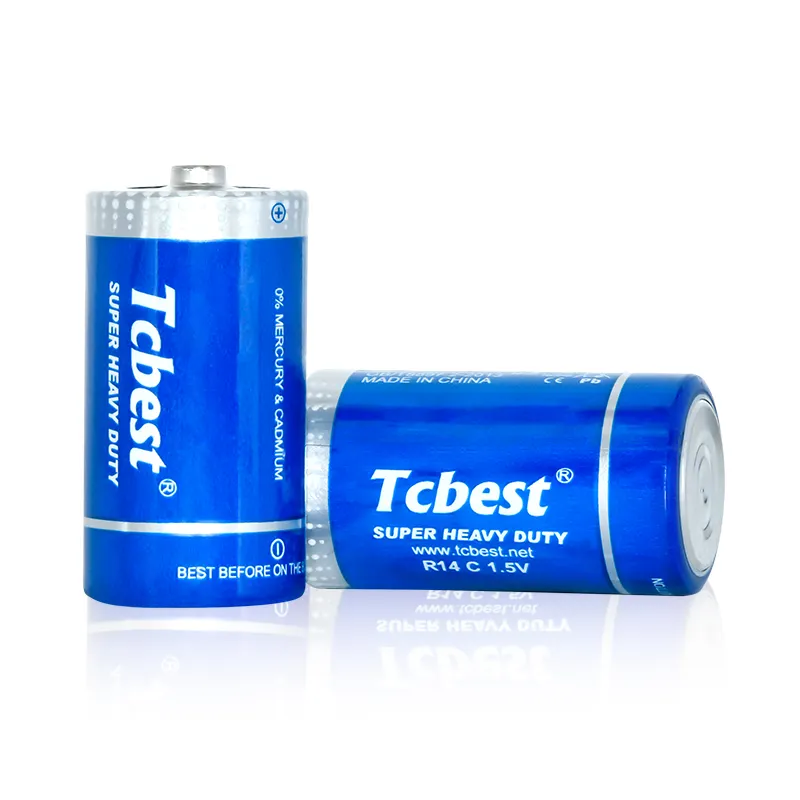The Evolution of Cost-Effective Battery Technology
Carbon zinc batteries have long stood as a testament to affordable and reliable power solutions in the modern world. These fundamental energy storage devices continue to play a crucial role in powering countless everyday devices while maintaining economic accessibility for consumers worldwide. As we explore the significance of carbon zinc batteries in today's market, we'll discover why they remain a popular choice despite newer battery technologies.
Understanding Carbon Zinc Battery Construction
Basic Components and Materials
Carbon zinc batteries consist of a zinc metal casing that serves as both container and negative electrode (anode), while a carbon rod acts as the positive electrode (cathode). The electrolyte comprises a paste mixture of zinc chloride, ammonium chloride, and manganese dioxide. This simple yet effective design has remained largely unchanged since its inception, contributing to its cost-effectiveness in manufacturing.
The construction process involves careful assembly of these components, ensuring proper insulation and sealing to prevent leakage. The carbon rod is surrounded by a mixture of manganese dioxide and carbon powder, which facilitates the electrochemical reactions necessary for power generation. This straightforward composition makes carbon zinc batteries one of the most economical power solutions available.
Manufacturing Process and Cost Benefits
The manufacturing of carbon zinc batteries benefits from well-established production methods and readily available materials. The zinc used in these batteries is abundant and relatively inexpensive compared to materials used in other battery types. Additionally, the carbon and manganese dioxide components are naturally occurring materials that can be sourced cost-effectively.
Production facilities can operate efficiently due to the mature technology and streamlined processes involved. This efficiency translates to lower production costs, which manufacturers can pass on to consumers, making carbon zinc batteries an attractive option for budget-conscious buyers.

Applications and Usage Scenarios
Common Consumer Devices
Carbon zinc batteries find extensive use in low-drain devices that don't require constant power output. Remote controls, wall clocks, simple toys, and basic electronic devices frequently utilize these batteries. Their affordability makes them particularly suitable for devices that consume power gradually over extended periods.
In developing markets, carbon zinc batteries remain the primary power source for essential household items. Their low cost and widespread availability ensure that basic electronic devices remain accessible to populations with limited financial resources.
Industrial and Commercial Applications
Beyond consumer applications, carbon zinc batteries serve various industrial and commercial purposes. Emergency lighting systems, backup power supplies, and basic measuring instruments often rely on these cost-effective power solutions. Their stability and predictable discharge characteristics make them suitable for applications where consistent, moderate power output is required.
Many businesses choose carbon zinc batteries for their non-critical operations, balancing performance requirements with budget constraints. The ability to purchase these batteries in bulk at competitive prices makes them an economical choice for organizations managing multiple devices or locations.
Environmental and Sustainability Considerations
Recycling and Disposal
Carbon zinc batteries present certain advantages from an environmental perspective. Their simple composition makes recycling processes relatively straightforward, though proper disposal channels must be utilized. Many components can be recovered and repurposed, contributing to circular economy initiatives.
The environmental impact of carbon zinc batteries is generally lower than some alternative battery technologies, particularly in terms of toxic materials content. However, responsible disposal remains crucial to prevent soil and water contamination from spent batteries.
Sustainable Manufacturing Practices
Modern manufacturing facilities increasingly implement sustainable practices in carbon zinc battery production. This includes energy-efficient production methods, waste reduction strategies, and the use of recycled materials where possible. These initiatives help maintain the batteries' cost-effectiveness while reducing environmental impact.
Manufacturers continue to research and develop improvements in production efficiency and material utilization, ensuring that carbon zinc batteries remain both economically and environmentally viable power solutions.
Future Outlook and Innovation
Technological Advancements
While carbon zinc batteries represent mature technology, ongoing research continues to improve their performance and efficiency. Scientists and engineers work on enhancing energy density, shelf life, and reliability while maintaining the fundamental cost advantages that make these batteries popular.
Recent developments focus on reducing internal resistance, improving current delivery, and extending storage capability. These improvements ensure that carbon zinc batteries remain competitive in specific market segments despite the emergence of newer battery technologies.
Market Trends and Predictions
The global market for carbon zinc batteries shows steady demand, particularly in emerging economies where cost-effectiveness is a primary consideration. Industry analysts predict continued strong demand in specific sectors, especially for basic consumer electronics and emergency power applications.
As technology evolves, carbon zinc batteries are expected to maintain their position as an affordable power solution while adapting to changing market needs and environmental requirements. Their role in providing accessible energy storage solutions remains significant, especially in price-sensitive markets.
Frequently Asked Questions
How long do carbon zinc batteries typically last?
Carbon zinc batteries generally have a shelf life of 2-3 years when stored properly at room temperature. Their actual service life depends on the device's power requirements and usage patterns, typically ranging from several months to a year in low-drain applications.
What makes carbon zinc batteries more affordable than other types?
The affordability of carbon zinc batteries stems from their simple design, readily available materials, and well-established manufacturing processes. The combination of inexpensive raw materials and efficient production methods results in lower production costs compared to other battery technologies.
Are carbon zinc batteries environmentally friendly?
While not completely environmentally neutral, carbon zinc batteries contain fewer toxic materials than many other battery types. They can be recycled through proper channels, and their components are relatively simple to recover. However, proper disposal is essential to minimize environmental impact.
Can carbon zinc batteries be used in high-drain devices?
Carbon zinc batteries are not recommended for high-drain devices as they perform best in applications with moderate to low power requirements. Using them in high-drain devices may result in reduced performance and shorter battery life, making other battery types more suitable for such applications.

